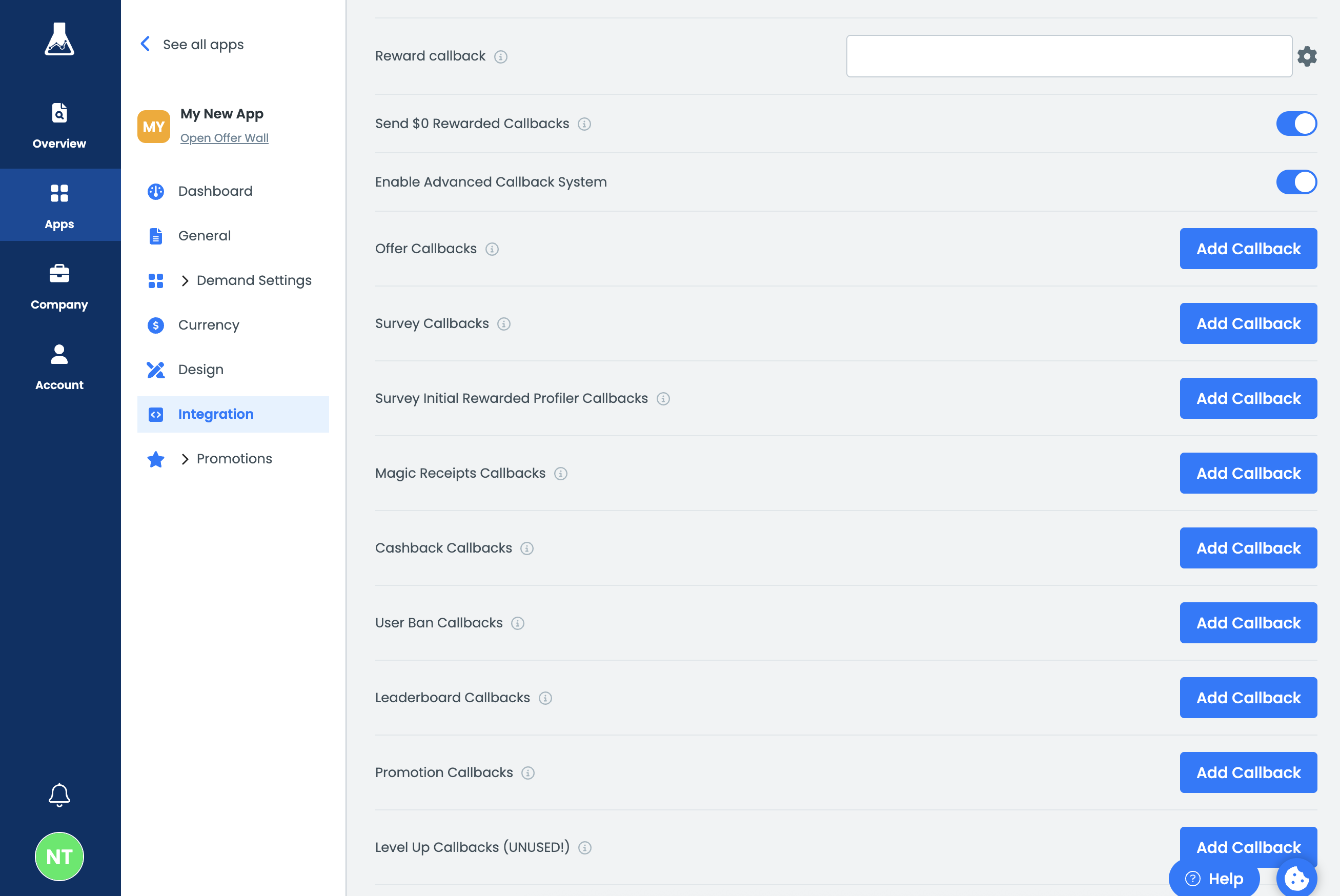Advanced callback system
Learn how to use our advanced callback system.
If you don’t need different states for postbacks, we recommend using the general reward callbacks. They simplify the integration process. Advanced callbacks require a deeper understanding of the various states and careful reading of the documentation for each demand type.
Advanced Callbacks Documentation
The Advanced Callback System allows you to receive detailed postbacks for various types of events in your integration. This guide explains how to enable and configure advanced callbacks.
1. Enabling Advanced Callbacks
To start using advanced callbacks:
- Navigate to the Advanced Callback Settings section in your dashboard.
- Toggle the switch Enable Advanced Callback System.
Once enabled, you will see a section for each callback type:
- Offer
- Surveys
- Surveys Initial Rewarded Profiler
- Magic Receipts
- Cashback
- User Ban Callbacks
- Leaderboard
- Promotion Callbacks

2. Configuring Callbacks
For each section, you can define one or multiple postback paths depending on your needs.

Adding a Callback
- Click Add Callback for the desired section.
- Provide the following information:
- Callback URL Host: The hostname for your postback URL.
- Protocol: Select HTTP or HTTPS.
Optional Settings
-
Enable Stateful:
Enable this if you want to receive different states for the selected demand type. -
Allow $0 Rewarded Callbacks:
If enabled, you will receive postbacks even when the reward value is $0.
Callback Activity
- Choose from the available states.
- You can add a separate callback for each state if needed.
Callback Parameters
- Fill out the names for all mandatory parameters.
- Add additional parameters as required.
- If using different states, include the parameter that indicates the state of the postback.
Custom Parameters
- Add any static custom parameters you need for your integration.
3. Tips
- Start with general callbacks before using stateful or $0 callbacks if you are new to advanced postbacks.
- Use separate callbacks for different states to avoid conflicts and make troubleshooting easier.
- Always ensure your callback URL is reachable and properly configured to receive postbacks.
Updated 21 days ago
